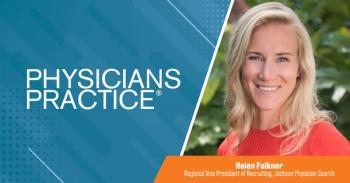
Returning to care in a “Not-Quite-Post Pandemic” world
How will physicians manage the increasing demand as patients return to care without getting burned out in the process?
The dissemination of coronavirus vaccines has brought the end of the pandemic into sight, with most U.S. adults expected to become eligible by May. While a year of social distancing has left many with cabin fever, a year without preventative care has enormously impacted both patients and their care team.
Because many patients delayed routine care during the pandemic,
The pandemic has already hit specialties like gastroenterology particularly hard, as it experienced the
Technology as a Solution to Prevent Burnout
According to Medscape’s recent report on
Medscape’s survey also found that, among GIs who reported burnout, 60 percent attribute it to bureaucratic tasks. This is unsurprising, as the
As gastroenterologists and physicians in general look for ways to manage the increase in patient volume while reducing administrative tasks and maintaining work life balance, using a specialty specific EHR system can be integral to an effective return to care strategy, offering the greatest opportunity for efficiency. Instead of saddling clinicians with additional tasks, an EHR platform should be intuitive, easy to use, and automatic. An effective solution will facilitate patient reminders, insurance claim processing, inventory management, and other administrative tasks through automatic processes that reduce the number of clicks and streamline overall workflow.
Having a telehealth solution that is integrated within the EHR can reduce clumsy workarounds in visit documentation and help streamline patient communication. While telehealth visits will likely decrease in the coming months, having it as an option can speed efficiency for patients and physicians alike by letting them conduct some visits remotely. For patients who are unable or unwilling to come in for an office visit – or in the event of a Covid-19 spike requiring local office closures -- telehealth can help ensure continued care and reduce the patient influx once offices reopen.
Digital tools can also streamline the cumbersome process of patient recall– a function that will be particularly important in the coming months. When completed manually, patient recall can require multiple employees across multiple departments communicating frequently and analyzing tremendous amounts of patient data. Additionally, turnover can cause breaks in a workflow and a disconnect in the patient’s care team. As practices juggle higher patient volumes, it’s critically important that patients don’t fall through the cracks, potentially further delaying the ability to catch CRC in its early stages.
Save time, increase productivity
The importance of quickly returning to regular CRC screenings cannot be overstated. While there is no “one-size-fits-all” solution to overcoming the challenges brought about by the pandemic, digital tools can help physicians save time and increase productivity. By investing in operational support designed for gastroenterology, these tools help reduce burnout, enhance patient care, and support physicians in building and maintaining a successful practice in the face of enormous challenges. From pre-screening and post procedure visits via
Newsletter
Optimize your practice with the Physicians Practice newsletter, offering management pearls, leadership tips, and business strategies tailored for practice administrators and physicians of any specialty.




